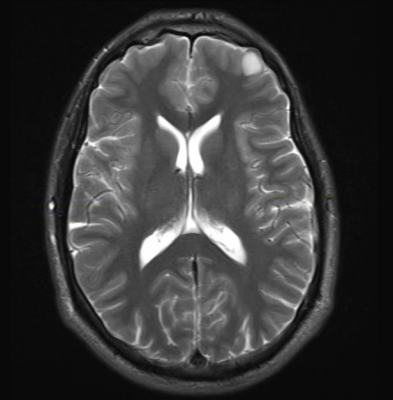
October 13, 2016 — In the largest trial conducted for average risk (A-R) medulloblastoma, survival rates following reduced radiation therapy (RT) boost volumes were comparable to standard treatment volumes for the primary tumor site. However, lower doses of craniospinal axis irradiation were associated with higher event rates and worse survival, according to research presented at the 58th annual meeting of the American Society for Radiation Oncology (ASTRO), Sept. 25-28 in Boston.
Findings from this phase III randomized trial indicate that physicians can adopt smaller boost volumes for posterior fossa RT but should maintain the standard RT dose for craniospinal irradiation (CSI).
The most common type of brain malignancy in children, medulloblastoma is an aggressive tumor that originates in the lower, rear area of the brain but has a propensity to spread to the upper brain and spine. As a result, the standard of care following surgical resection for these children has included systemic chemotherapy and irradiation to both the posterior fossa (i.e., the primary site) and the craniospinal axis. Complications of craniospinal irradiation, however, include considerable negative effects on patients’ neurocognitive abilities, endocrinologic function and hearing.
Researchers from the National Cancer Institute-supported Children’s Oncology Group conducted this phase III trial to assess outcomes from a reduced radiation boost volume to the posterior fossa among pediatric A-R medulloblastoma patients and a lower CSI dose specifically in younger children. While several single-institution trials have found limited posterior fossa boost to be comparable to whole posterior fossa boost, this is the first trial that was sufficiently powered to state definitively that there is no survival difference between the two approaches.
Findings are based on data from 464 patients ages three to 21 with A-R medulloblastoma. Eligible patients had complete or near-complete resection of their primary tumors and no evidence of anaplasia or spread of the cancer beyond the posterior fossa. Patients were randomized to receive either a standard radiation boost volume to the posterior fossa (PFRT group, n = 237) or a reduced dose of involved field RT (IFRT group, n = 227). The 226 patients who were ages three to seven were also randomized to receive either a standard irradiation dose of 23.4 Gy to the craniospinal axis (SD-CSI group, n = 110) or a reduced dose of 18 Gy (LD-CSI group, n = 116). Following maximum surgery and within 31 days following resection, patients began six weeks of RT. After a one-month break, patients began to receive alternating cycles of Cisplatin- and Cytoxan-based chemotherapy.
Primary outcomes included the amount of time from study entry to disease progression, disease recurrence, death from any cause or second malignant neoplasm. Researchers compared rates of overall survival (OS), event-free survival (EFS), local failure and distant failure by computing Hazard Ratios (HR) and performing intent-to-treat analysis.
With a median follow-up of more than six and a half years, reduction in the volume of RT boost to the posterior fossa did not compromise overall or event-free or survival in pediatric patients with A-R medulloblastoma. Overall survival at five years was 84.1 ± 2.8 percent for patients who received the reduced volume with IFRT and 85.2 ± 2.6 percent for patients who received the standard volume with PFRT. EFS at five years was 82.2 ± 2.9 percent for IFRT and 80.8 ± 3 percent for PFRT. Rates of local failure also did not vary significantly between treatment arms. Local failure at five years was 1.9 ± 0.1 percent for IFRT and 3.7 ± 1.3 percent for PFRT (p = 0.178).
“This trial — the largest of its kind to date — indicates that it is safe to adopt a limited posterior fossa boost for patients receiving radiation therapy for average risk medulloblastoma, and that these children can have similar positive outcomes with lower chances of radiation affecting surrounding brain tissue” said Jeff M. Michalski, M.D., MBA, FASTRO, professor of radiation oncology at Washington University in St. Louis and lead author of the study. “Additional data are needed, however, to address the appropriate volume for patients with higher risk disease or those who have metastasis at the time of diagnosis.”
While reduced RT volume to the posterior fossa did not impact survival rates, a low dose of craniospinal irradiation was associated with lower rates of event-free and overall survival for the youngest pediatric patients. Overall survival at five years was 78.1 ± 4.4 percent for patients ages three to seven who received low-dose irradiation therapy to the CSI versus 85.9 ± 3.8 percent for the standard CSI dose. EFS at five years was 72.1 ± 4.8 percent for the LD-CSI group, compared to 82.6 ± 4.2 percent for SD-CSI. Rates of distant failure did not vary significantly between treatment groups. Isolated distant failure at five years was 12.8 ± 3.2 percent for LD-CSI and 8.2 ± 2.8 percent for SD-CSI (p = 0.115).
“Unfortunately, we were disappointed to find that a lower dose of irradiation therapy was associated with increased rate of failure in the younger children,” said Michalski. “Reducing the treatment by just three fractions from 23.4 Gy to 18 Gy was associated with a higher rate of events and diminished overall survival. Patients with average-risk medulloblastoma should continue to receive a standard dose of 23.4 Gy to the craniospinal axis, unless they are enrolled in a clinical trial.”
For more information: www.astro.org


 April 17, 2024
April 17, 2024 








